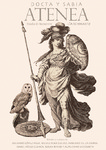Mostrar o rexistro simple do ítem
Isabel Clara Eugenia: ¿una infanta castellana?
| dc.contributor.author | Martínez Millán, José | |
| dc.date.accessioned | 2019-02-26T10:23:46Z | |
| dc.date.issued | 2019 | |
| dc.identifier.citation | Martínez Millán, José. (2019). Isabel Clara Eugenia: ¿una infanta castellana?. En Sagrario López Poza, Nieves Pena Sueiro, Mariano de la Campa, Isabel Pérez Cuenca, Susan Byrne y Almudena Vidorreta (Editores), Docta y Sabia Atenea. Studia in honorem Lía Schwartz (pp. 491-544). DOI: https://doi.org/10.17979/spudc.9788497497046.491 | es_ES |
| dc.identifier.isbn | 978-84-9749-704-6 | |
| dc.identifier.uri | http://hdl.handle.net/2183/21967 | |
| dc.description.abstract | [Resumen] Aunque la historiografía siempre ha mostrado la imagen de Isabel Clara Eugenia como hija fiel y obediente de Felipe II, la evolución ideológica y religiosa de la Infanta muestra las profundas divergencias que existieron con su progenitor. Educada en la defensa de los intereses castellanos y en una rígida espiritualidad formalista, Isabel evolucionó hacia la espiritualidad radical, definida por Roma, y opuesta a la establecida por su padre. La asimilación de la ideología romana fue tan intensa que, cuando quedó viuda, tomó el hábito de la orden tercera. Este acercamiento se tradujo, incluso, en gobernar (a veces) más desde los intereses de Roma que desde la Monarquía a la que representaba. La evolución de la vida de Isabel Clara Eugenia, fue paralela a la evolución que experimentó al Monarquía hispana: construida sobre el modelo de Monarquía Universal pasó a convertirse en la Monarquía Católica. | es_ES |
| dc.description.abstract | [Abstract] Despite Isabella Clara Eugenia has always been characterized by historiography as the faithful and obedient daughter of Philip II, her ideological and religious evolution shows us the deep divergences that she had with her father. Although she was educated in the idea of the defence of the castilian interests, based in a rigid formalist spirituality, Isabella evolved to a radical spirituality, defined by the Holy See and opposite to her father´s one. Her assimilation of the roman ideology was as intense that, when she became widow, she took the habit of the third order (Orden tercera). This rapprochement made that she governed (most of the times) closely to the Pope´s interests than to the ones of the Spanish monarchy that she represented. Thus, her lifetime evolution was parallel to the one that the own Spanish monarchy suffered: built under the model of a Monarchia Universalis, it finally passed to be a Catholic Monarchy. | es_ES |
| dc.language.iso | spa | es_ES |
| dc.publisher | Universidade da Coruña, Servizo de Publicacións | es_ES |
| dc.relation.uri | https://doi.org/10.17979/spudc.9788497497046.491 | |
| dc.rights | © Los autores | es_ES |
| dc.subject | Isabel Clara Eugenia | es_ES |
| dc.subject | Casa real | es_ES |
| dc.subject | Espiritualidad descalza | es_ES |
| dc.subject | Corte | es_ES |
| dc.subject | Países Bajos | es_ES |
| dc.subject | Isabella Clara Eugenia | es_ES |
| dc.subject | Royal Household | es_ES |
| dc.subject | Barefoot spirituality (Espiritualidad descalza) | es_ES |
| dc.subject | Court | es_ES |
| dc.subject | Habsburg Netherland | es_ES |
| dc.title | Isabel Clara Eugenia: ¿una infanta castellana? | es_ES |
| dc.type | info:eu-repo/semantics/article | es_ES |
| dc.rights.access | info:eu-repo/semantics/embargoedAccess | es_ES |
| dc.date.embargoEndDate | 2020-03-01 | es_ES |
| dc.date.embargoLift | 2020-03-01 | |
| UDC.startPage | 491 | es_ES |
| UDC.endPage | 544 | es_ES |
| dc.identifier.doi | https://doi.org/10.17979/spudc.9788497497046.491 |






